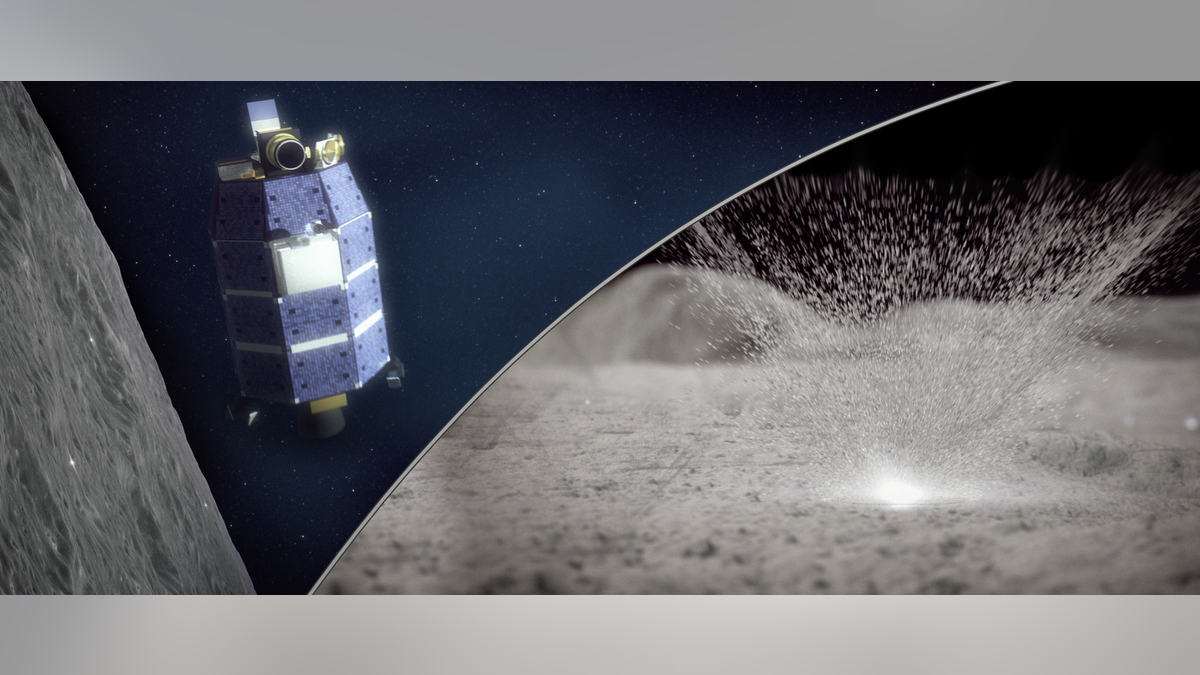
Meteoroid impacts regularly liberate puffs of water vapor from the moon, suggesting that minuscule amounts of water may lurk just under the entire lunar surface, a new study finds.
When the Apollo missions brought lunar rocks to Earth, scientists found evidence that the moon was devoid of water. However, in the past decade, data from a bevy of spacecraft — including NASA's Cassini, Deep Impact and Lunar Prospector missions, and India's Chandrayaan-1 probe — revealed trace amounts of water on the surface of the moon. Even more intriguingly, they found water across the moon's surface, not only at the poles, as was previously expected.
But scientists still have many questions about the source and extent of lunar water. To learn more, researchers analyzed data from NASA's Lunar Atmosphere and Dust Environment Explorer (LADEE), which orbited the moon from October 2013 to April 2014.
Related: Watch Two Meteorites Hit the Moon!
The scientists behind the newly published research found that the moon released numerous puffs of water vapor from near its surface into its exosphere, the very tenuous layer of molecules comprising the closest thing that the moon has to an atmosphere. These outbursts coincided with 29 known meteoroid streams that passed near Earth during that eight-month span of time, including the Leonids, Geminids and Quadrantids.
"Most of the geological processes we deal with in planetary science are very slow — we almost never get to see something respond dynamically over the scale of hours like we did here," lead author Mehdi Benna, a planetary scientist at NASA Goddard Space Flight Center in Greenbelt, Maryland, told Space.com.
The researchers suggested that meteoroid impacts kicked up these puffs of water from the moon, and said that four of these puffs were apparently caused by previously undetected meteoroid streams.
"One would think we know all of the meteoroid streams that are out there, but apparently we don't," Benna said.
By analyzing the amount of water released by meteoroid streams of different sizes, the scientists estimated that the uppermost 3.15 inches (8 centimeters) of lunar soil is dehydrated — any less, and smaller meteoroids would have excavated more water. Below this desiccated layer, the researchers suggest, water comprises up to about 0.05% of the weight of the rock up to at least 10 feet (3 meters) deep.
"With our measurements, we could see exactly the water extracted from the moon in a very dynamic way by micrometeroid impacts, and by analyzing the data, see how much water was stored in the lunar reservoir and where it was going," Benna said.
The researchers estimated that meteoroid impacts cause the moon to lose as much as 220 tons (200 metric tons) of water annually. To sustain this amount of loss over time, they suggested that this water either was present when the moon formed, about 4.5 billion years ago, or was delivered by cosmic impacts from water-laden rocks soon after the moon was born.
The lunar samples from the Apollo missions may have appeared devoid of water because the water on those rocks was likely not incorporated into the rocks themselves, but only weakly coated them. As such, any water on the rocks was likely fragile and difficult to hold onto during the return trips, Benna said.
Future research can examine how deep water actually extends on the moon, Benna said. He and his colleagues detailed their findings online today (April 15) in the journal Nature Geoscience.
- Water on Mars May Have Been Triggered by Meteorite Impacts
- Watch a Meteor Smack the Blood Moon in This Lunar Eclipse Video!
- What Moon Craters Can Tell Us About Earth, and Our Solar System
Original article on Space.com.